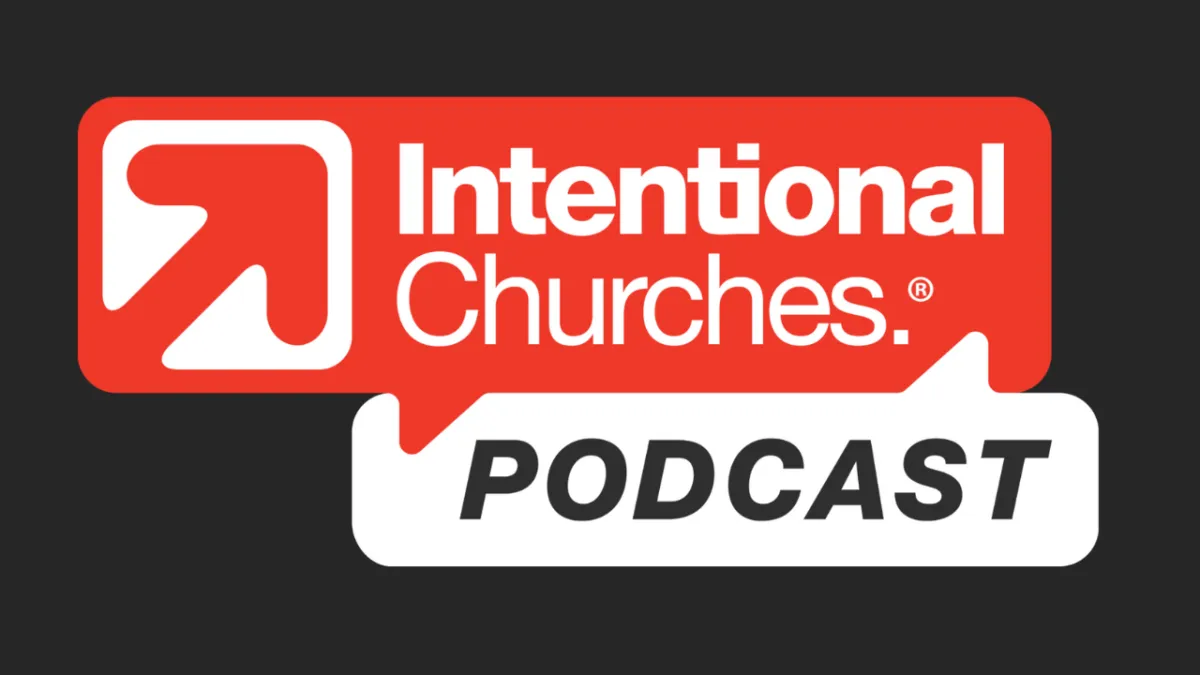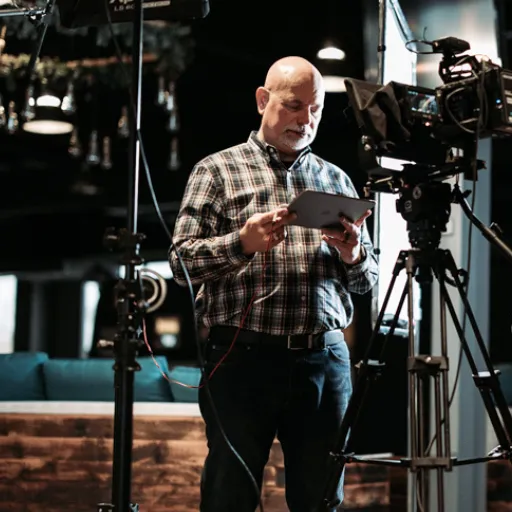
Blocking and Tackling
Learning from the Intentional Churches Podcast...Again!
I’ve spent a good deal of time over the years guiding executive pastors and other senior leaders in mastering the foundations—what Intentional Churches calls “blocking and tackling”: alignment, clarity of mission, disciple-making strategy, leadership infrastructure, and consistent execution. So, when I come across resources that reinforce those fundamentals while also nudging us forward in fresh ways, I get excited! One such resource is the work of Intentional Churches and their excellent Podcast.
I recently listened to one episode of the show that I just had to share!
“From Programming to Pastoring in Rural America, with Ben Ellefritz”
In this episode, host Doug Parks, Intentional Churches Co-Founder, sits down with Ben Ellefritz, Executive Pastor at The Crossing Church, to explore what growth, discipleship, and multi-site strategy really look like—especially in contexts often under-resourced, rural, or small towns. (Apple Podcasts)
Here are a few of my takeaways that I found especially refreshing and worth sharing:
1. A thoughtful recalibration of multi-site strategy
Ben describes how The Crossing had launched campuses with a “standard model” for a while, but discovered that sustainability (in terms of staffing, disciple-making, and finances) was weaker than expected. The pivot point? Their 12th campus launch, which they built entirely on pre-launch engagement, giving, and disciple-making. It became their first financially self-sustaining plant from day one. (Apple Podcasts) What I love about this: they didn’t just replicate the same template; they said, “What’s working? What isn’t? What do we need to fix?” Then they went back to basics and made the launch mission-centric, not just program-centric.
2. Disciple-making as the driver
“Difference Makers” is a term The Crossing uses rather than “volunteers.” They intentionally shift the culture so that every person serving is seen as someone who is playing a part in the disciple-making mission. (Apple Podcasts) That wording change might seem small, but in my world of infrastructure and systems you know: language shapes culture. When your volunteers think of themselves as “Difference Makers,” they can step into higher expectation, higher alignment, and higher purpose. Ben also talks about visible scoreboards and discipleship pathways—from baptism to maturity—as part of this. (Apple Podcasts)
3. From “programming” to “pastoring”
Ben’s critique of “program chasing” versus “pastor leading life change” really struck me. In many churches the multi-site conversation becomes: how many campuses, how many services, how many seats. Ben turns it around: what about how many people are moving in disciple-making, how many Difference Makers are being raised up, how many campuses are self-sustaining in mission and finances. He sees staff training not just as “let’s run the program” but “let’s pastor the people—and their lives are changed.” (Apple Podcasts)
4. Lay leadership and high expectations
One of the tensions in growing churches is adding staff vs growing lay leadership. Ben addresses the gap: staff can’t do everything, so they invest in lay leaders, but not as helpers—they are bona fide leaders in mission. That means clarity, expectations, training, accountability. He describes the importance of having systems for tracking, measuring, and aligning—scoreboards for staff and lay leaders alike. This matters deeply in the “infrastructure champion” mindset I’ve been teaching: without measurement and alignment, discipleship becomes diffuse, outcomes drift, identity becomes fuzzy.
What this means for your church (and for you as an Executive Pastor)
Here are three practical leadership moves I want to encourage you to consider, drawn from the episode and aligned with the blocking & tackling mindset:
Move #1: Re-examine your launch or expansion model
If your church is exploring new campuses, communities, or plants—pause and ask:
What are the pre-launch disciple-making efforts we will deploy (small‐groups, mission teams, giving culture) before we open the doors?
Is the new site going to be financially self-sustaining, or are we launching with hopeful subsidies?
What’s our baseline metric for launching “mission-ready,” not just “service-ready”?
The Crossing’s story underscores that the difference is in the pre-work: engagement, giving, volunteers (Difference Makers) ready before the building opens.
Move #2: Shift your language and culture toward “Difference Makers”
Language matters: when your team and your congregation see “volunteers” as helpers, there is often a soft mindset. Imagine instead they are “Difference Makers”—servants who lead the mission. Then you ask:
What are the pathways for someone to become a Difference Maker?
What training, what expectations, what scoreboard (even just a simple Excel bar chart) do we use to track participation, disciple-making impact, leadership growth?
What does “difference” look like in our context: changed lives, baptisms, small-group multiplication, service hours, outreach?
Move #3: Build staff/lay dashboards and pathways for disciple-making
In the same way a business tracks key performance indicators, your church leadership team (and your board) need dashboards. Numbers alone don’t save, but numbers without narrative become meaningless. Some dashboards to consider:
Number of small groups launched, number of people in groups, number of group leaders active
Number of Difference Makers commissioned, number of volunteers trained/coached
Baptisms, new small-group participants, pre-launch teams for new campuses
Financial sustainability metrics for campuses or ministry sites
Staff/leader training hours, lay leader retention, lay leader outcomes
Partner those numbers with the narrative: “We exist to make disciples who make disciples,” and ask: “How will we know we’re doing that well?” Then align your weekly, monthly, quarterly rhythms around those numbers.
Why I’m recommending the podcast to all of my coaching clients
As someone guiding executive pastors and leadership teams, I often hear: “We’re too small for systems like that,” or “We don’t have the budget to invest in trackers and dashboards,” or “We’ve tried before and got bogged down in process.” I’ll tell you: the Intentional Churches Podcast busts those myths. It shows that even in rural or smaller settings, you can build aligned, disciple-making factories—not program factories. The difference is in intention.
By recommending this podcast, I’m helping my clients:
Translate high-level leadership thinking into actionable steps they can implement this quarter
Get language they can use with boards and staff (e.g., “Difference Makers,” “scoreboards,” “mission-ready campuses”) which builds alignment
Tap into best-practices from churches that aren’t big megachurches in major metros—they’re churches that get real estate, culture, systems and discipleship right, even in less-glamorous contexts
Encourage shared learning: have your leadership team listen to this episode together, then workshop: what does this mean for us?
Next steps for you
Here’s what I suggest as your next practical step:
Block 40 minutes this week and listen to the episode: [From Programming to Pastoring in Rural America, with Ben Ellefritz] (on Apple Podcasts).
Convene your senior team / executive pastors roundtable and debrief:
What stood out to us?
What language did we hear that we want to adopt (e.g., Difference Makers)?
What are three “blocking and tackling” moves we can take this quarter based on this?
Assign one person (you, the Executive Pastor, likely) to build a one-page dashboard: identify 3-5 key measures of disciple-making and volunteer leadership for your context. Use that dashboard to bring discipline to your next 90-day rhythm.
Craft a “mission-ready launch checklist” for any new ministry initiative, campus, or site you’re considering. Include early disciple-making engagement, volunteer commissioning (Difference Makers), financial viability metrics.
Final word
In leadership—especially in church leadership—the temptation is to “add more stuff.” More services, more outreach events, more campuses. What Intentional Churches remind us is that the foundation is the disciple-making ecosystem, the aligned leadership culture, the infrastructure behind the mission. That’s where you win. That’s where you fight your way into sustainable growth rather than unsustainable sprinting.
If you’re serious about leading your church from “doing programs” to “making disciples who make disciples,” then I wholeheartedly recommend the Intentional Churches Podcast. Let it challenge you. Let it help your leadership team raise the bar. Let it help you rebuild your rhythms around what matters most.
And if you’d like to dig deeper—with me—on how to build your dashboard, align your launch checklists, and re-tool your culture for Difference Makers, you know where to find me. Let’s keep doing the blocking and tackling—so your church can keep making a difference.




Facebook
Instagram
X
LinkedIn
Youtube